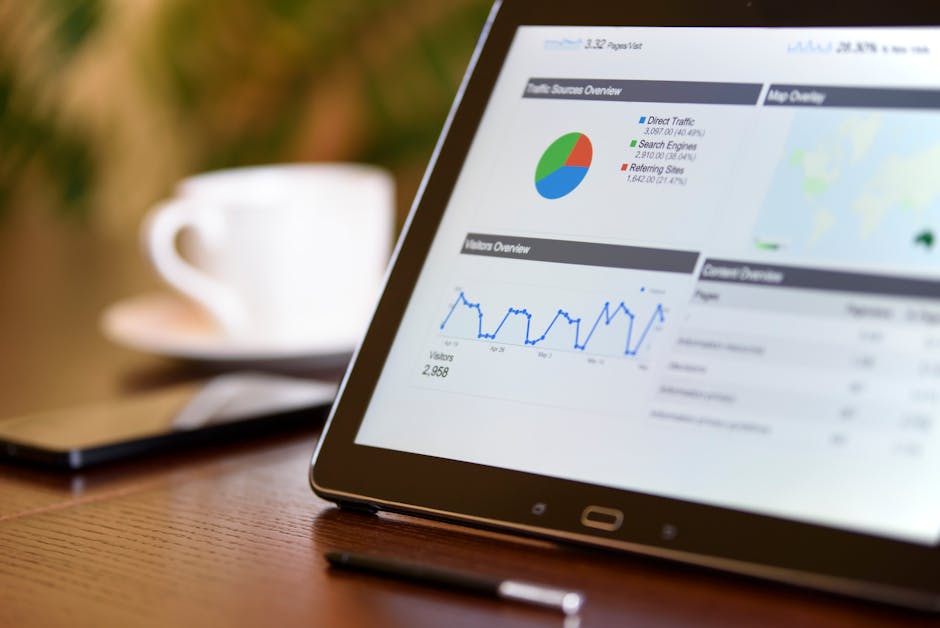 html
html
Scraping E-commerce Sites Simply? I Tried It
E-Commerce Data: A Treasure Trove
Ever wondered how e-commerce giants like Amazon seem to know exactly what prices their competitors are offering? Or how they personalize product recommendations so effectively? The answer, in many cases, lies in data. Specifically, data they've gathered, often through a process called web scraping. While manually browsing thousands of product pages is impossible, ecommerce scraping automates the process, unlocking a wealth of ecommerce insights. We're going to explore how you can do this yourself, even with limited coding experience.
But why would *you* want to scrape e-commerce sites? There are tons of reasons:
- Price Tracking: Monitor competitor pricing to stay competitive.
- Product Details: Gather comprehensive product information for market research data, including descriptions, specifications, and customer reviews.
- Availability Monitoring: Track product stock levels to identify potential supply chain issues.
- Catalog Clean-ups: Automate the process of identifying and correcting inconsistencies in your product catalog.
- Deal Alerts: Get notified instantly when prices drop on specific products.
- Competitive Intelligence: Understand your competitors' strategies by analyzing their product offerings, pricing, and promotions.
Think about it: You could track the price of a specific laptop across multiple retailers, receiving alerts whenever it drops below a certain threshold. Or, you could analyze the best-selling features of coffee makers to inform your own product development. The possibilities are vast.
What is Web Scraping Anyway?
At its core, web scraping (also sometimes called screen scraping or web data extraction) is the process of automatically extracting information from websites. Instead of manually copying and pasting data, you use a program (a web scraper or web scraping software) to do it for you. This program fetches the HTML code of a webpage and then parses it to extract the specific data points you're interested in. Imagine a robot that tirelessly copies and pastes information from websites – that’s essentially what a web scraper does.
There are various approaches to data scraping, ranging from simple tools that require no coding to more sophisticated solutions that involve programming languages. We'll be focusing on a beginner-friendly approach using Python and Selenium.
Is Web Scraping Legal and Ethical?
Before we dive into the technical details, it's crucial to address the legal and ethical considerations surrounding web scraping. Scraping without permission can sometimes violate a website's terms of service (ToS) or even run afoul of copyright laws.
Here are some key points to keep in mind:
- Robots.txt: Always check the website's
robots.txtfile. This file, typically located at the root of a website (e.g.,www.example.com/robots.txt), provides instructions to web crawlers (including scrapers) about which parts of the site should not be accessed. Respect these instructions. - Terms of Service: Review the website's terms of service. Many websites explicitly prohibit scraping.
- Rate Limiting: Avoid overwhelming the website with requests. Implement delays between requests to avoid being blocked. Be a good internet citizen!
- Respect Copyright: Don't scrape copyrighted content without permission.
- Identify Yourself: Use a descriptive User-Agent string in your scraper so the website owner can identify your bot if needed.
In general, it's best to scrape only publicly available data and to be transparent about your activities. If you're unsure about the legality of scraping a particular website, it's always a good idea to seek legal advice.
Python and Selenium: A Powerful Combination
While there are many tools and languages you can use for web scraping, Python is often considered the best web scraping language due to its extensive libraries and ease of use. Selenium is a powerful tool for automating web browsers. It lets us control a browser programmatically, making it perfect for scraping dynamic websites (websites that rely heavily on JavaScript to load content).
Why Selenium? Many modern e-commerce sites use JavaScript to load product information dynamically. This means that the initial HTML code you get when you request the page might not contain all the data you need. Selenium solves this problem by actually rendering the page in a browser, executing the JavaScript, and allowing you to access the fully loaded content.
A Step-by-Step Example: Scraping Product Prices from Amazon
Let's walk through a simple example of scraping product prices from Amazon using Python and Selenium. **Disclaimer:** Amazon's website structure changes frequently, so this code might need adjustments.
- Install the necessary libraries: You'll need Python, Selenium, and a web driver (like ChromeDriver) installed. Open your terminal or command prompt and run:
pip install selenium pip install webdriver-manager - Download a Web Driver: Selenium needs a "driver" to control the browser. ChromeDriver is common for Chrome. The `webdriver-manager` library simplifies this: it automatically downloads and manages the correct ChromeDriver version for your Chrome browser.
- Write the Python code: Here's a basic script to scrape the price of a product from an Amazon page.
from selenium import webdriver from selenium.webdriver.chrome.service import Service from webdriver_manager.chrome import ChromeDriverManager from selenium.webdriver.common.by import By # Replace with the actual URL of the product you want to scrape product_url = "https://www.amazon.com/dp/B08L5H4F8H" # Example: An Echo Dot # Set up Chrome options for headless browsing (optional, runs in the background) chrome_options = webdriver.ChromeOptions() chrome_options.add_argument("--headless") # Set up the Chrome driver using webdriver_manager service = Service(ChromeDriverManager().install()) driver = webdriver.Chrome(service=service, options=chrome_options) try: # Load the webpage driver.get(product_url) # Find the price element (this is likely to change, inspect the page!) # Common price elements: # - //span[@class='a-offscreen'] (for the discounted price) # - //span[@class='a-price a-text-price']//span[@class='a-offscreen'] (for regular price) price_element = driver.find_element(By.XPATH, "//span[@class='a-offscreen']") price = price_element.text print(f"The price of the product is: {price}") except Exception as e: print(f"An error occurred: {e}") finally: # Close the browser driver.quit() - Run the code: Save the code as a Python file (e.g.,
amazon_scraper.py) and run it from your terminal:python amazon_scraper.py - Inspect the Output: If everything goes well, the script will print the price of the product to your console.
Important Notes:
- Element Identification: The most crucial part of this process is identifying the correct HTML elements that contain the data you want. Use your browser's developer tools (usually accessed by pressing F12) to inspect the page and find the appropriate CSS selectors or XPath expressions. Amazon's website structure changes frequently, so what works today might not work tomorrow.
- Error Handling: The code includes a
try...exceptblock to handle potential errors. Web scraping can be unpredictable, so it's important to anticipate errors and handle them gracefully. - Headless Browsing: The
--headlessoption allows you to run the browser in the background without a visible window. This is useful for running scrapers on servers or in automated environments. - Dynamic Content: If the price is loaded dynamically after the page loads, you might need to add a delay (using
time.sleep()) to give the JavaScript time to execute. You might also need to use more advanced Selenium techniques to wait for specific elements to load.
Beyond Basic Scraping: Advanced Techniques
Once you're comfortable with the basics of web scraping, you can explore more advanced techniques:
- Pagination: Scrape data from multiple pages by navigating through pagination links.
- Data Cleaning and Transformation: Clean and transform the scraped data to make it more usable. This might involve removing unwanted characters, converting data types, or handling missing values.
- Data Storage: Store the scraped data in a database (e.g., MySQL, PostgreSQL) or a file (e.g., CSV, JSON).
- Scheduling: Schedule your scraper to run automatically at regular intervals using tools like cron.
- Proxies: Use proxies to avoid being blocked by websites.
- Anti-Bot Measures: Learn about common anti-bot measures and how to circumvent them ethically (e.g., using user-agent rotation, solving CAPTCHAs).
Data Scraping Services and Web Scraping Software
If you find web scraping too complex or time-consuming, you can consider using a data scraping service or web scraping software. These services and tools handle the technical aspects of scraping for you, allowing you to focus on analyzing the data. Some vendors even offer data as a service and pre-built data reports. There are options to match different budgets and use cases.
Some things to consider when evaluating web scraping software:
- Ease of use (no-code or low-code options)
- Scalability
- Ability to handle complex websites (e.g., those using JavaScript or requiring logins)
- Pricing
- Customer support
Beyond E-Commerce: Other Applications of Web Scraping
While we've focused on e-commerce, web scraping has many other applications:
- News Scraping: Gather news articles from various sources to track current events or monitor specific topics.
- Social Media Scraping: Collect data from social media platforms for sentiment analysis or market research (be mindful of platform terms of service regarding linkedin scraping or other sites).
- Real Estate Scraping: Track property listings and prices.
- Financial Data Scraping: Gather stock prices and financial news.
Getting Started: A Quick Checklist
Ready to dive in? Here's a quick checklist to get you started:
- Choose Your Tools: Select a programming language (Python is recommended) and a web scraping library (Selenium is a good choice for dynamic websites).
- Set Up Your Environment: Install Python, Selenium, and a web driver.
- Pick a Target Website: Choose a website you want to scrape (remember to check the
robots.txtfile and terms of service). - Inspect the Page: Use your browser's developer tools to identify the HTML elements containing the data you want.
- Write Your Scraper: Write the code to fetch the webpage and extract the data.
- Test and Refine: Test your scraper thoroughly and refine it as needed.
- Be Ethical: Respect the website's terms of service and avoid overwhelming the server with requests.
Web scraping can seem daunting at first, but with a little practice, you'll be able to unlock a wealth of valuable data. Whether you're interested in competitive intelligence, product monitoring, or simply gathering information for your own personal projects, web scraping can be a powerful tool.
Ready to take your web data extraction to the next level? Consider using professional solutions for more robust and reliable results. Explore data as a service options for ready-to-use data reports. Sign up today to see how we can help!
Any questions? Contact us:
info@justmetrically.com#WebScraping #DataScraping #EcommerceScraping #Python #Selenium #DataExtraction #WebData #CompetitiveIntelligence #MarketResearch #EcommerceInsights


